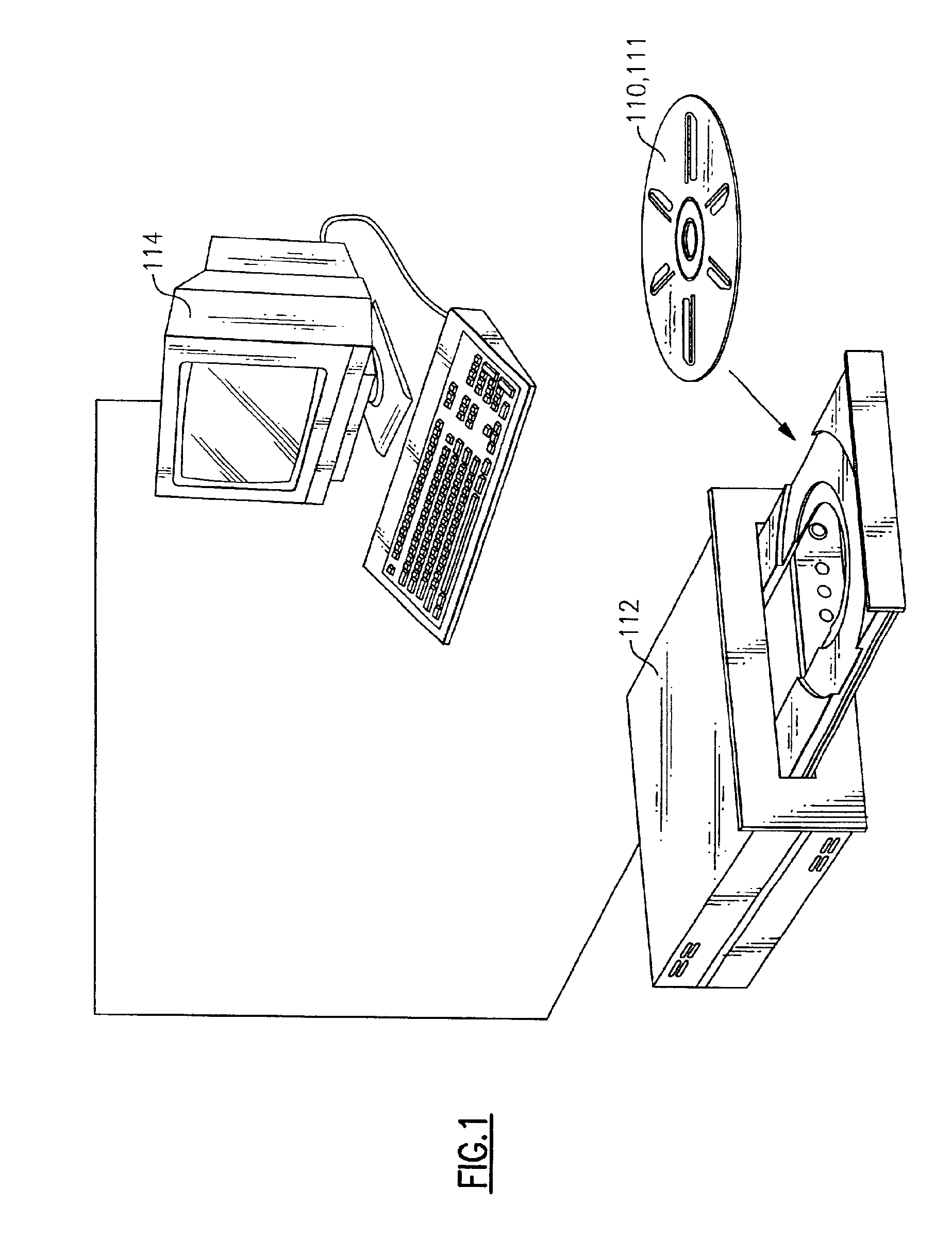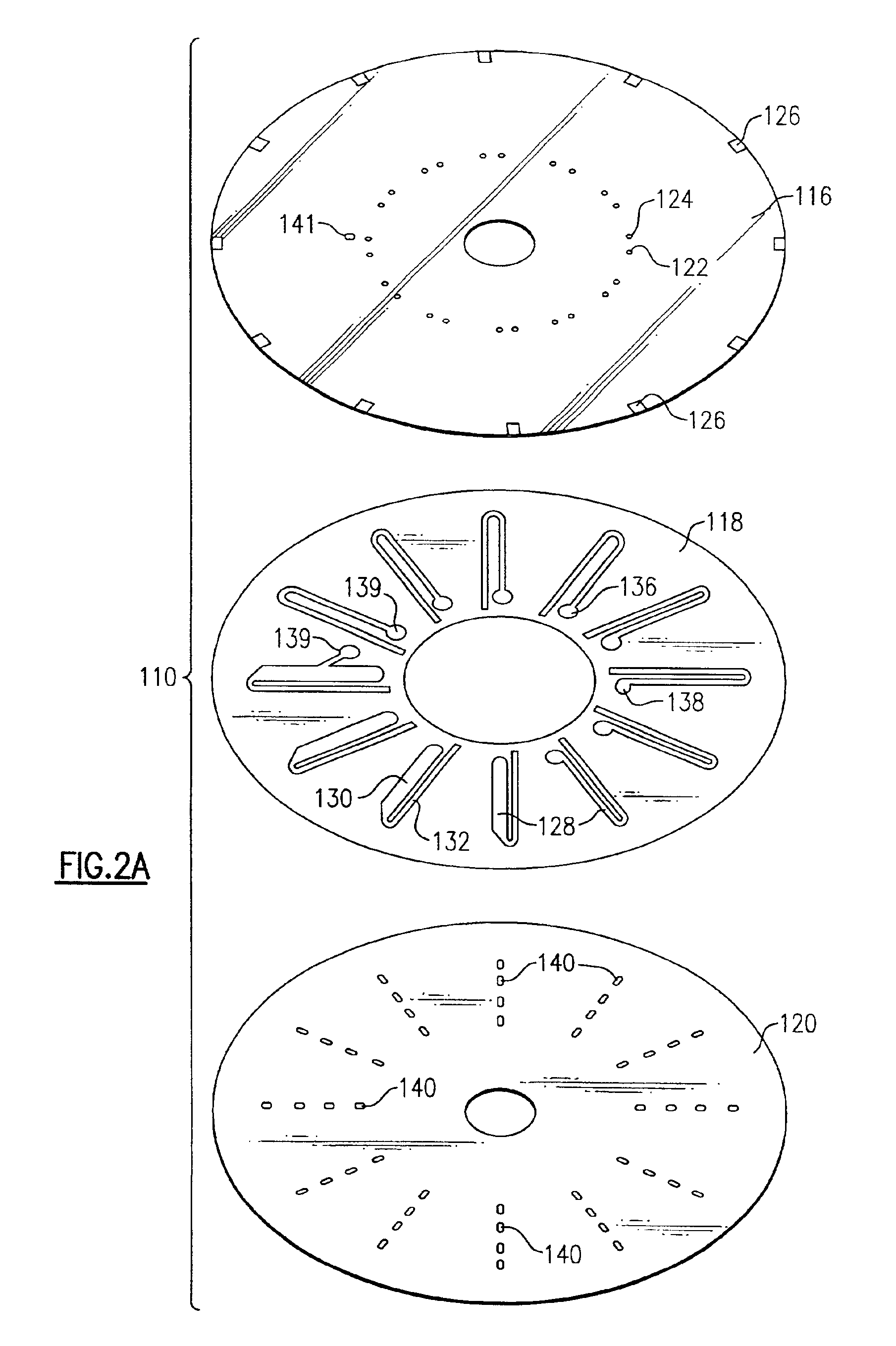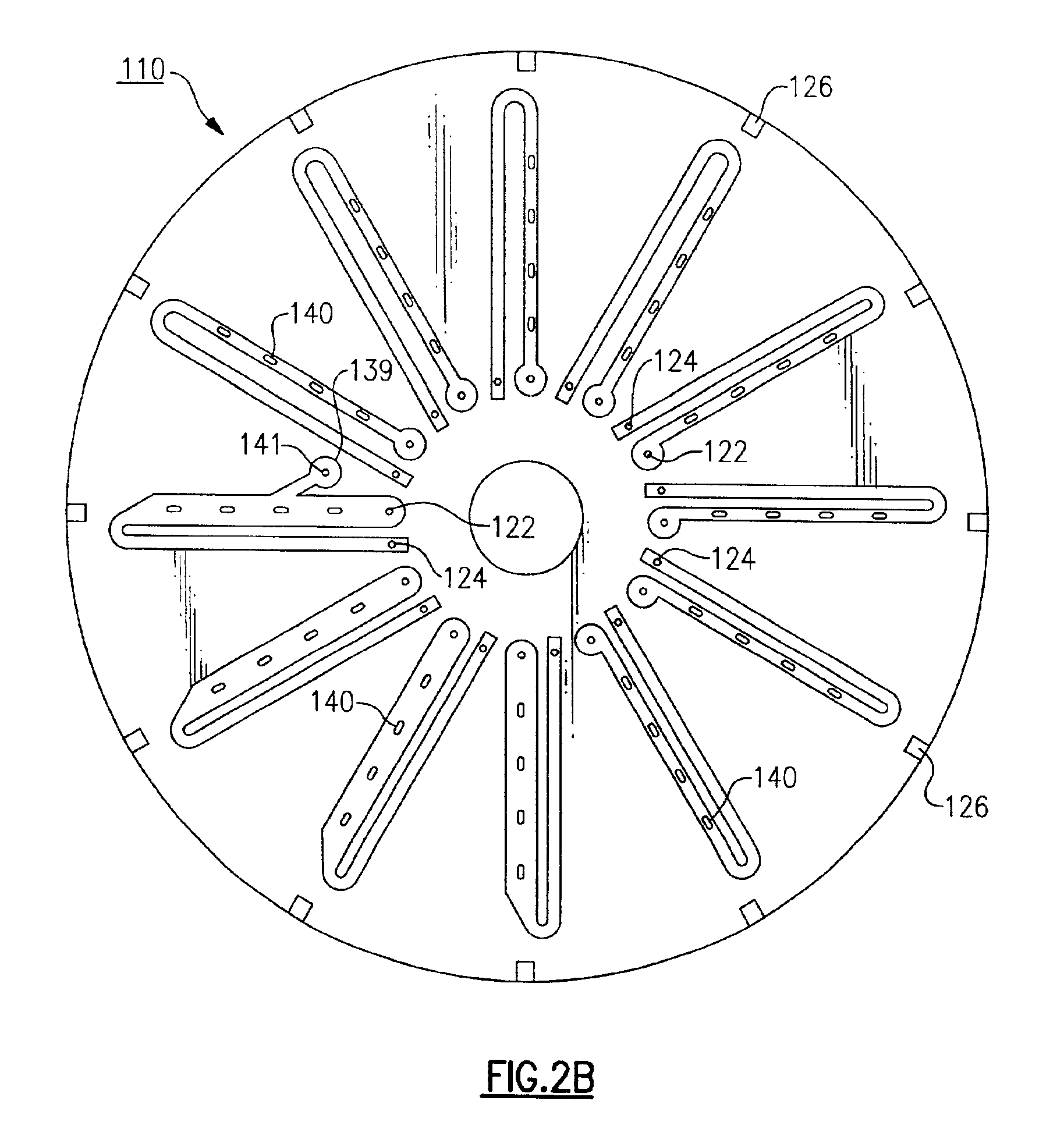Surface assembly for immobilizing DNA capture probes in genetic assays using enzymatic reactions to generate signal in optical bio-discs and methods relating thereto
a surface assembly and probe technology, applied in the field of detection of specific sequences of nucleic acids or oligonucleotides, can solve the problems of not being easily adapted to macromolecules, such as antibodies and dna
- Summary
- Abstract
- Description
- Claims
- Application Information
AI Technical Summary
Benefits of technology
Problems solved by technology
Method used
Image
Examples
experimental examples
[0168]Having generally described the invention, the same will be more readily understood through reference to the following examples, which are provided by way of illustration, and are not intended to be limiting of the present invention.
example 1
Spin Coating the Bio-disc
[0169]Fresh polystyrene solution was prepared by adding 3 g polystyrene pellets (Sigma cat. no. 182427; molecular weight=280,000) to 310 ml toluene and stirring for 1 hour using a teflon stir bar and a stir plate. After the polystyrene was completely dissolved in the toluene, 68 ml reagent grade isopropanol was slowly added while stirring.
[0170]A stock solution of nitrocellulose was prepared by diluting a nitrocellulose collodium solution (4-8% in ethanol / diethylether, Fluka cat. no. 09986, lot no. 389973 / 1 30299) 1:5 in reagent grade ethanol. Prior to spin coating, the stock solution was diluted 1:10 with reagent grade ethanol and filtered using a 0.2 μm syringe filter.
[0171]A polycarbonate disc having a 200 Angstrom gold semi-reflective layer (BTI Optical Bio-disk Set FDL21:E001308) was placed on a “spin coater,” or modified centrifuge, with the reflective surface up. While rotating the disc on the spin coater, the reflective surface was cleaned with reage...
example 2
Preparing the Bio-disk for the Enzyme Assay
[0174]The disc from Example 1 was placed on a CD assembler / spindle with the nitrocellulose layer up. Between about 0.5 to 2.0 μl of 1 μM oligo probes (capture DNA) in 1 M NH4OAc were applied to the disk at defined target zones. The droplets of capture DNA were dried onto the nitrocellulose at 37° C.
[0175]A cover disc containing U-shaped fluidic circuits (50 μM adhesive; Fraylock, DBL243a) was applied using a disk assembler spindle, and the disc was run through a wringer to seal the two disks.
PUM
| Property | Measurement | Unit |
|---|---|---|
| thick | aaaaa | aaaaa |
| thick | aaaaa | aaaaa |
| thickness | aaaaa | aaaaa |
Abstract
Description
Claims
Application Information
 Login to View More
Login to View More - R&D
- Intellectual Property
- Life Sciences
- Materials
- Tech Scout
- Unparalleled Data Quality
- Higher Quality Content
- 60% Fewer Hallucinations
Browse by: Latest US Patents, China's latest patents, Technical Efficacy Thesaurus, Application Domain, Technology Topic, Popular Technical Reports.
© 2025 PatSnap. All rights reserved.Legal|Privacy policy|Modern Slavery Act Transparency Statement|Sitemap|About US| Contact US: help@patsnap.com



